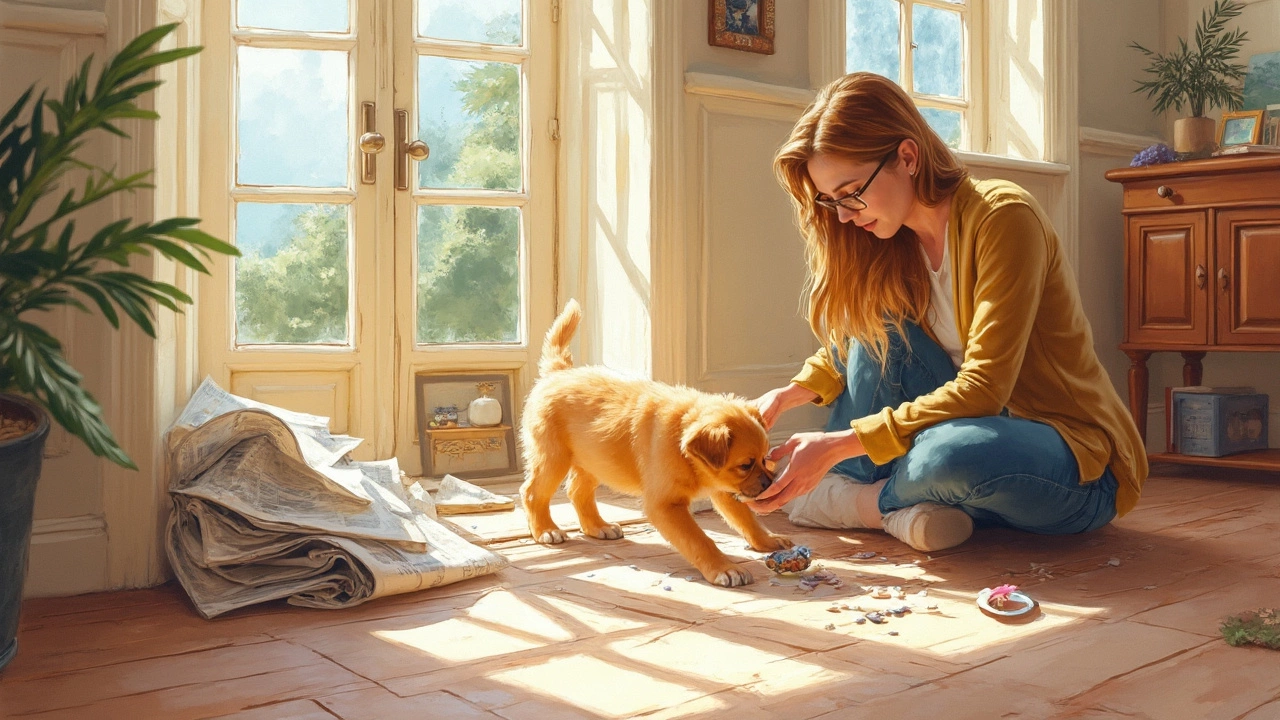Puppy Toilet Training: Simple Steps to Success
Got a new pup and wonder how to stop those little messes around the house? The good news is you don’t need a doctorate in dog behavior to get it right. With a clear routine, a few helpful tools, and an eye for your puppy’s cues, you can teach your furry friend where to go and keep your floors clean.
Set a Consistent Schedule
Dogs love routine. Start by taking your puppy out first thing in the morning, after every meal, after playtime, and before bedtime. A young puppy can only hold its bladder for about an hour for every month of age, so a three‑month‑old will need a break roughly every three hours. Keep a simple log – a notebook or phone note – to track when you go out. Over time you’ll see a pattern and can predict the next bathroom break.
Pick a specific spot outside and always bring your pup there. The scent will signal “this is the place”. A quick cue word like “go potty” or “outside” helps your dog associate the command with the action. Consistency beats randomness every time.
Read Your Puppy's Signals
Before you step outside, watch for the classic signs: sniffing the floor, circling, whining, or heading toward the door. When you see these, act fast. Delaying even a minute can turn a signal into an accident.
If your puppy does have an accident inside, stay calm. Clean the spot with an enzymatic cleaner so the scent doesn’t lure them back. Never punish after the fact – puppies don’t connect the punishment with the earlier mess, and you’ll only add fear.
Reward is key. As soon as your pup finishes outside, give a treat, lots of praise, and maybe a quick play session. The reward has to come within a few seconds so they link the good behavior with the treat.
Crate training can speed up the process. Dogs naturally avoid soiling where they sleep. Make the crate just big enough for a bed and a little room to turn around. Never use the crate as punishment – it should feel safe and comfortable.
Here’s a quick daily checklist:
- Morning: bathroom trip right after waking.
- After each meal: take them out within 5‑10 minutes.
- Playtime breaks: a quick dash outside after a burst of energy.
- Before bedtime: final bathroom run, then settle the crate.
- Evening snack: same routine as meals.
If you stick to this plan, most puppies start showing control by the time they’re 4‑5 months old. Remember, every dog is different – some learn faster, some need a bit more patience.
Other practical tips:
- Use a leash on the first few outings so you can guide them to the spot.
- Keep a portable potty pad for emergencies when you’re out and can’t reach the yard.
- Limit water intake an hour before bedtime to reduce night‑time accidents.
Finally, stay positive. Training a puppy is a marathon, not a sprint. Celebrate each small win, and soon the messes will be a thing of the past. With a steady schedule, keen observation, and plenty of rewards, you’ll have a well‑trained pup who knows exactly where to do business – and you’ll enjoy a cleaner home in the process.
Posted By Bryndle Redding On 24 May 2025 Comments (0)
Puppy Toilet Training: What Age is Best to Start?
Wondering when to start toilet training your new puppy? This article breaks down the best age to begin housebreaking, explains why timing matters, and shares practical tips that work in real life. Find out how puppy development affects toilet training success and pick up tricks to keep accidents from turning your home into a disaster zone. If you’ve got a young pup and want fewer messes (and less stress), you’re in the right place.
READ MORE